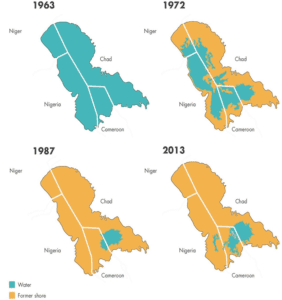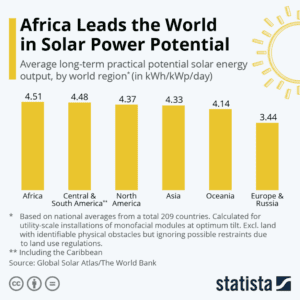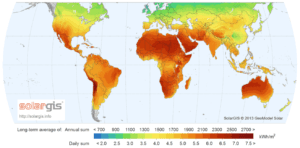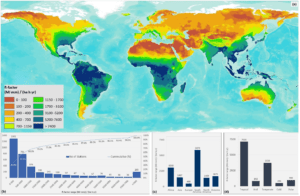Exploring the challenges facing the Nigeria energy mix, resource optimization, and environmental crisis
Significant recent events impacting the ecosystem, environment, climate, and energy are all associated with climate change. The effects of climate change on various societal sectors are interconnected. Food production and human health can be harmed by drought. Flooding has the potential to spread illness and harm infrastructure and ecosystems. Health problems can reduce workers’ productivity, raise mortality, and have an impact on the availability of food. The impacts of climate change can be seen in every area of our world. Furthermore, the consequences of climate change are not homogeneous across the world; even within a country, different regions may experience different impacts. Underserved communities (mostly in Africa), which frequently have the highest exposure to risks and the fewest resources to respond, might become increasingly vulnerable as a result of long-standing socioeconomic inequalities.
A typical example is Lake Chad, one of Africa’s largest water bodies, bounded by Nigeria, Chad, Niger, and Cameroon. The lake’s size has decreased by 90 percent[1] due to overuse of water, extended drought, and the impacts of climate change. Less than 1,500 square kilometers now make up the lake’s surface, down from 26,000 square kilometers in 1963. In addition to destroying livelihoods, the reduction—which has been dubbed an ecological disaster—has also resulted in the loss of invaluable biodiversity.

Changing Surface Area of Lake Chad, 1963 – 2013
Again, a panacea to the current status quo is the way of Energy Transition, as the major contributor to climate change is the emission of carbon via the generation and consumption of fossil fuels. For most developing countries such as Nigeria, it is important to keep in mind that substantial clean energy source(s), infrastructure to harness these resources for generation, and a structure for efficient distribution should all be existent for the energy mix to be properly substituted. Hydro, gas, and solar are potentially alternative substitutes to displace the ‘dirty’ components of Nigeria’s energy mix. However, the scourge of climate change doesn’t ignore its impacts on natural resources (renewable and nonrenewable). Could Nigeria make the most of the persisting effects of climate change? Exist any possibilities that could be explored to improve the current circumstance in the long run?
Solar Power Potential
Africa is generally acknowledged to possess the world’s greatest potential for solar energy, with the highest levels of solar radiation exposure[2]. Geographically, Nigeria falls in this region with enormous solar energy potential. As a result, investing in and fully exploiting this energy source is tremendous potential and benefits to boost the nation’s power generation. The two top African nations utilizing solar energy as the major constituent of their energy dynamics are South Africa and Egypt, particularly in power generation.


World Map of Global Horizontal Irradiation, Solaris 2013
Hydropower generation and flood mitigation
Because of heavy and continuous rainfall (in the tropical rainforest)[3], areas along river channels and their tributaries are frequently flooded throughout the nation. Two of the main options for controlling floods involve modifying high-capacity existing dams (technologically and structurally), like the Kainji dam in Niger State, and constructing new ones; possibly along the Benue River (to cushion the impact of the Lagdo dam release, Cameroon). The enormous amount of water (high flow rate) being used in conjunction with sophisticated turbines and generators would significantly improve the capacity of such dams to generate electricity. As a result, the improved and newly constructed dams would be able to hold a large volume of water, potentially reducing overflow that may ultimately cause floods. Additionally, this could serve as a considerable water supply for domestic use as well as irrigation in areas beset by drought and desert encroachment.

(a) Global Rainfall erosivity map (spatial resolution of 30 arc-seconds). Erosivity classes correspond to quantiles;(b) number and cumulative percentage of GloREDa stations grouped by erosivity; (c) mean erosivity by continent; (d) mean erosivity by climate zone.
Rainfall erosivity is an index that describes the power of rainfall to cause soil erosion (and potentially flooding).
There is no denying that climate change poses a serious threat to the existence and prosperity of our planet. As a result, a periodic holistic approach is necessary to use the situation to modify or better the status quo. Accordingly, while proactive policies should indeed be designed to prevent possible crises, adaptive measures should be explored to help the nation’s present situation. Furthermore, Nigeria’s energy transition agenda should be encouraged by taking full advantage and maximizing the nation’s renewable energy mix, which includes solar and hydropower, since they have the ability to improve the nation’s dire energy condition.
Resolutions were made for concerned government offices and agencies to take into consideration to ensure an efficient and wholesome transition at the National Dialogue on Energy Transition, which was organized by the Natural Resource Governance Institute (NRGI) in collaboration with the Nigeria Extractives Industries Transparency Initiative (NEITI) and BudgIT Foundation[4].
footnotes
[1] https://reliefweb.int/report/chad/tale-disappearing-lake
[2] https://www.weforum.org/agenda/2022/07/africa-solar-power-energy-sustainability-climate-change/
[3] https://www.internetgeography.net/topics/what-is-the-climate-of-the-rainforest/
[4] https://resourcegovernance.org/events/nigeria-national-dialogue-energy-transition
Join us at PLSI as we continue the journey of fostering public accountability in Nigeria!
Written by:

Kolawole Kolade – Program Officer at PLSI

